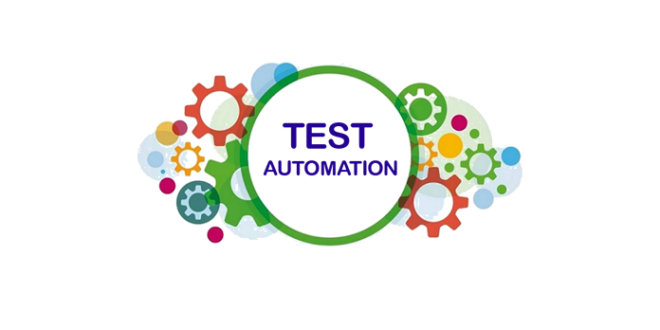How Automation Testing Changes Quality Assurance Processes
How Automation Testing Changes Quality Assurance Processes
Blog Article
From Handbook to Automated Testing: A Comprehensive Guide to Transitioning Smoothly and Properly
In the realm of software application screening, the change from handbook to automated procedures has actually become a progressively vital transition for companies looking for to improve efficiency and accuracy in their screening techniques. The trip from manual to automated testing is not without its obstacles, but when approached strategically and with a clear strategy in mind, the advantages can be significant.
Advantages of Automated Evaluating
Automated screening uses numerous benefits, improving performance and accuracy in software program growth procedures. Automated examinations can be run simultaneously on numerous tools and operating systems, considerably speeding up the screening phase contrasted to hands-on screening.
Additionally, automated screening ensures a greater level of precision in spotting problems. Uniformity in screening is likewise improved, as automated tests carry out the same actions specifically each time they are run.
Picking the Right Tools

To start with, assess your objectives and needs. Recognize the range of your task, the technologies involved, and the skill collection of your group. This evaluation will aid you identify the features and capabilities you require in your testing devices.
Second of all, think about the compatibility of the devices with your existing procedures and systems. Seamless integration with your present software program development lifecycle is necessary to ensure a smooth shift to automation.
Furthermore, assess the scalability and versatility of the tools. As your testing needs develop, the devices must be able to adapt and suit adjustments properly.
Finally, factor in the assistance and community around the devices. When executing automated testing, durable support and an energetic customer area can offer beneficial sources and assistance. By thoroughly considering these aspects, you can pick the right tools that align with your requirements and set the phase for an effective transition to automated testing.
Composing Reliable Examination Scripts

When crafting test manuscripts, it is necessary to take into consideration the details needs of the software being checked and make certain that the scripts address all essential performances. Detailed and clear naming conventions for examination scripts and examination situations can boost readability and maintainability. Additionally, including error handling systems within the examination manuscripts can help in recognizing and attending to problems promptly.
Additionally, arranging test manuscripts into modular elements can improve reusability and scalability, decreasing redundancy and enhancing efficiency in test script upkeep. Regular reviews and updates to evaluate manuscripts are critical to keep rate with evolving software application needs and performances. By following these concepts, testers can develop reliable and durable test manuscripts that contribute dramatically to the success of automated testing processes.
Integrating Automation Into Workflows
Effective assimilation of automation devices into existing workflows enhances processes and boosts efficiency within software application look at here now growth cycles. When incorporating automation into operations, it is important to identify repetitive tasks that can be automated to save time and decrease human mistake. By effortlessly incorporating automated screening devices like Selenium or Appium into the software program growth lifecycle, groups can attain faster responses on code changes, resulting in quicker bug discovery and resolution. This integration permits for continual testing throughout the development procedure, making certain that any kind of issues are identified at an early stage, resulting in higher software application high quality. Furthermore, automation can be used to set off examinations immediately after each code dedicate, offering instant recognition and maximizing testers to concentrate on even more facility situations. Appropriate combination of automation tools requires partnership in between development, screening, and operations groups to develop a unified process that optimizes performance and efficiency in supplying premium software program items.
Making Certain a Smooth Transition
Successfully transitioning to automated testing involves meticulous planning and cautious execution to lessen interruptions and maximize efficiency in the software program advancement procedure - automation testing. To make sure a smooth transition, it is necessary to start by performing a comprehensive evaluation of the existing screening procedures and determining areas where automation can bring the most substantial benefits. Engaging with all stakeholders beforehand in the procedure, additional reading consisting of programmers, testers, and job managers, is vital for gathering support and buy-in for the automation initiative
Interaction is crucial throughout this change stage. Clear interaction of the goals, benefits, and expectations of automated screening assists to manage any resistance or concerns that may emerge. Furthermore, offering adequate training and sources for staff member to upskill in automation devices and techniques is vital for making certain a successful transition.

Verdict
In conclusion, transitioning from manual to automated screening supplies countless advantages, consisting of boosted efficiency and integrity. By selecting the ideal tools, composing reliable examination manuscripts, and incorporating find out this here automation effortlessly right into workflows, organizations can ensure a smooth and effective transition. It is essential to welcome automation as a valuable asset in software application screening procedures to enhance total top quality and performance.
In the realm of software program testing, the shift from handbook to automated processes has actually become a progressively important shift for companies looking for to improve effectiveness and precision in their testing practices. Automated examinations can be run concurrently on multiple devices and operating systems, drastically speeding up the screening stage contrasted to hand-operated screening. Consistency in screening is also boosted, as automated tests implement the exact same actions specifically each time they are run.To guarantee the successful implementation of selected screening tools, the creation of efficient test manuscripts plays a critical role in confirming the performance and performance of automated processes - automation testing. By adhering to these concepts, testers can develop effective and robust test manuscripts that contribute dramatically to the success of automated testing processes
Report this page